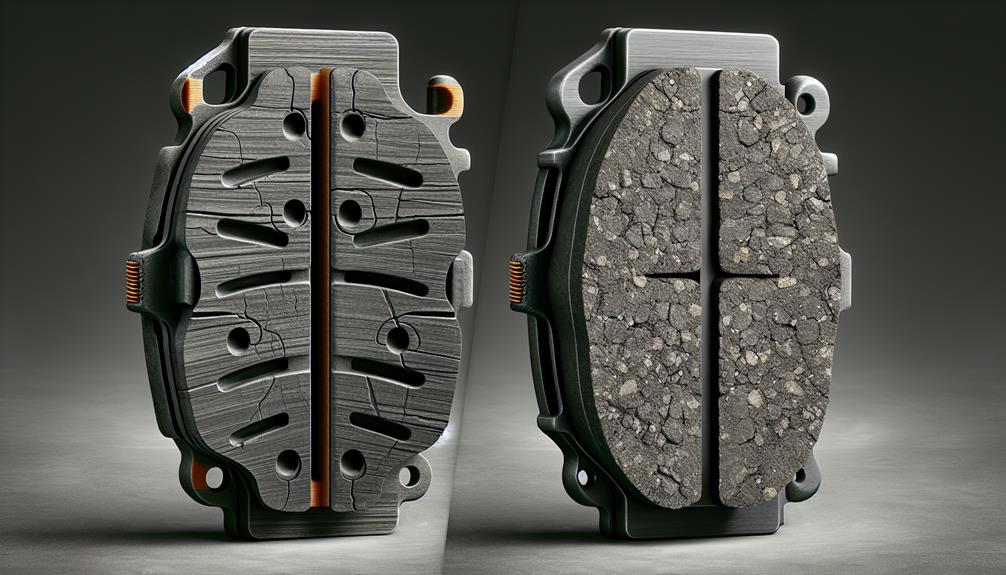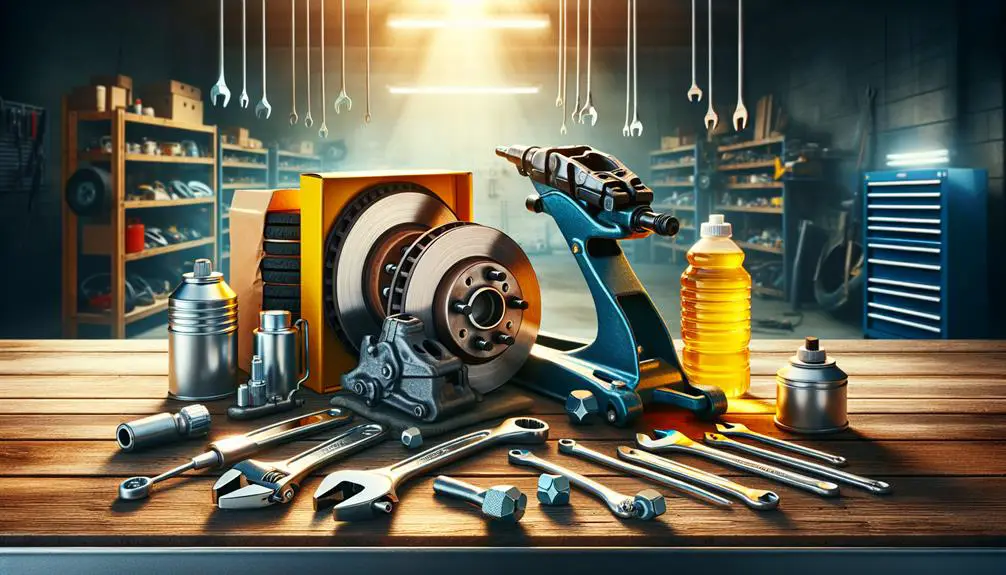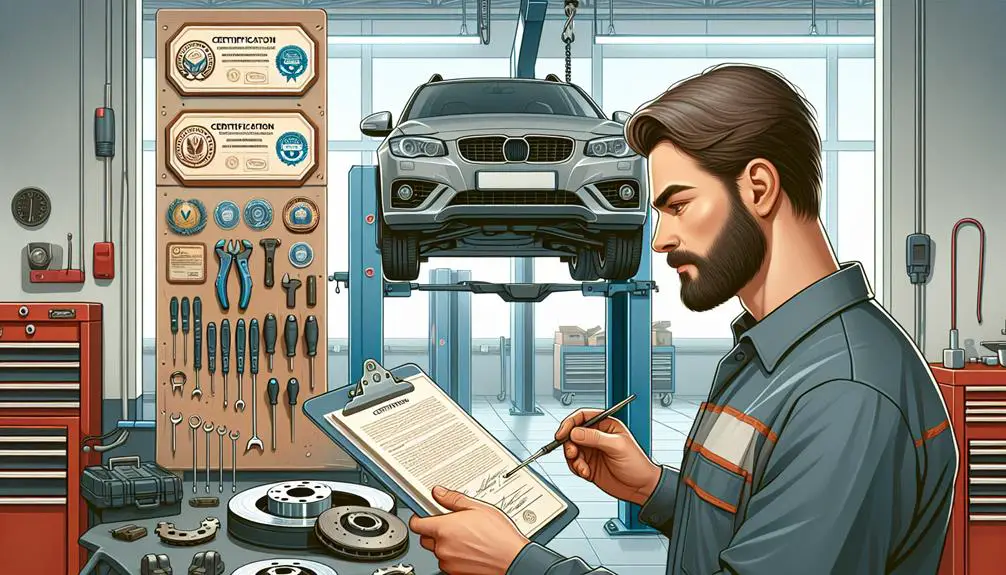Changing your car's brake pads is an essential maintenance task that should be done regularly to ensure your vehicle's safety and performance. If you notice any signs of worn brake pads, such as squeaking or grinding noises, reduced braking efficiency, or vibrations when braking, it's important to replace them as soon as possible.
Here are the steps to change your car's brake pads:
- Gather the necessary tools and materials – You will need a jack, jack stands, lug wrench, a C-clamp, new brake pads, and possibly new rotors.
- Prepare the car – Park on a level surface, engage the parking brake, and chock the wheels. Loosen the lug nuts on the wheel you will be working on.
- Raise the car – Use the jack to lift the car off the ground and secure it with jack stands.
- Remove the wheel – Once the car is securely lifted, remove the lug nuts and take off the wheel.
- Remove the old brake pads – Locate the caliper, remove the caliper bolts, and slide out the old brake pads.
- Install the new brake pads – Use the C-clamp to compress the caliper piston, insert the new brake pads, and reassemble the caliper.
- Reassemble the wheel – Put the wheel back on, tighten the lug nuts, lower the car, and test the brakes before driving.
Remember to consult your vehicle's manual or seek professional help if you are unsure about any step in the process. Regular maintenance and timely replacement of brake pads are crucial for your safety and the longevity of your car's braking system.
Recognizing Worn Brake Pads

To guarantee worn brake pads, listen for a high-pitched screech when you apply the brakes, a clear indicator they're due for replacement. This noise isn't just annoying; it's a designed warning that your brake pads have worn down to a critical level. Manufacturers insert a small metal shim, known as an indicator, which makes this screeching sound when it contacts the rotor. Ignoring this can lead to more serious, and expensive, problems down the line.
You'll also want to pay attention to how your car feels when you brake. If you're noticing that it takes longer to stop, or if the brake pedal sinks closer to the floor than usual, it's likely your brake pads are worn. This decrease in responsiveness is a safety hazard and needs immediate attention.
Another sign is a deep, metallic grinding noise when braking. This suggests that the brake pads have worn through entirely, and the metal calipers are grinding against the metal rotors. At this point, you're not just looking at replacing the brake pads but potentially the rotors too, which can be costly.
To conclude, don't overlook the visual cues. Most vehicles allow for a visual check of the brake pad thickness without removing the wheel. If the pad is thinner than a quarter-inch (about 6.4 mm), it's time for a change. You don't have to be an expert to notice these signs, but you do need to act on them to guarantee your safety and the safety of others on the road.
Choosing the Right Brake Pads
Now that you know how to recognize worn brake pads, let's focus on how to select the best replacements for your vehicle. Choosing the right brake pads is important for ensuring safety and maintaining the performance of your car. Here's a quick guide to help you make an informed decision:
- Consider the Material
- Brake pads are mainly made from ceramic, semi-metallic, and organic materials. Ceramic pads are quiet and durable, ideal for daily driving in cities. Semi-metallic pads offer excellent performance and are suited for more demanding conditions, but they can be noisier and wear down rotors faster. Organic pads, made from a mixture of fibers, are softer and quieter but wear out quicker and aren't as effective in extreme conditions. Think about your driving habits and conditions when deciding.
- Check Compatibility
- Not all brake pads will fit your vehicle. It's important to check the compatibility with your car's make, model, and year to ensure you purchase the right size and type. Incorrect pads can lead to ineffective braking and potentially dangerous situations.
- Assess Your Driving Needs
- Your driving habits influence the type of brake pads you should choose. If you're often in heavy traffic, ceramic might be your go-to for its quiet operation and less dust. For those who enjoy spirited drives or live in hilly areas, semi-metallic pads might offer the performance you need. Understand your regular driving conditions to select the most suitable brake pads.
Choosing the right brake pads isn't just about replacing a worn-out part; it's about enhancing your vehicle's safety and performance. Keep these tips in mind to ensure you make the best choice for your driving needs.
Tools and Materials Needed

Before you start on the task of altering your brake pads, you'll need to gather a few necessary tools and materials.
First, you'll need a car jack and jack stands to safely lift and support your vehicle. Don't rely solely on the jack; the stands will make sure your car stays securely lifted while you're working.
Next, grab a lug wrench or a tire iron to remove the wheel. You'll find this tool important for gaining access to the brake assembly. Once the wheel is off, you'll need a set of wrenches or sockets to remove the caliper. Typically, a ratchet with a range of socket sizes works best, as brake caliper bolts can vary in size.
You'll also need a C-clamp or a brake caliper tool. This is necessary for pushing the caliper piston back in, allowing space for your new brake pads. Without this step, you won't be able to fit the caliper over the new, thicker pads.
Don't forget to have your new brake pads ready, along with any recommended lubricant for the caliper bolts or the back of the pads. This helps in preventing squealing noises after installation.
First, consider having some brake cleaner on hand. It's perfect for cleaning the brake caliper and other components before installing the new pads. This will ensure that your brake system functions smoothly without any unwanted debris or dust.
Gathering these tools and materials before you begin will make the process smoother and quicker, letting you get back on the road safely in no time.
DIY Brake Pad Replacement Steps
To start, make sure your vehicle is parked on a flat surface and the parking brake is engaged before you begin replacing your brake pads. Replacing them is a straightforward task that you can do on your own with the right tools and a bit of patience. It's a great way to save money and understand more about your vehicle's braking system. Here are the crucial steps you'll need to follow:
- Remove the Wheel
- Loosen the lug nuts on your wheel before lifting your car with a jack. Once raised, support it with jack stands for safety. Then, remove the lug nuts completely and take off the wheel, exposing the brake caliper and brake pads.
- Replace the Brake Pads
- With the wheel off, the brake caliper and brake pads are accessible. Use a wrench to remove the caliper bolts, then slide the caliper off the brake rotor. Be careful not to strain the brake line. The old brake pads will be clipped onto the caliper or resting against the rotor; remove these. Check the caliper piston and press it back into the caliper housing with a C-clamp or a caliper piston tool. Insert the new brake pads, ensuring they're properly aligned and secured.
- Reassemble and Test
- After the new pads are in place, reattach the brake caliper and tighten the bolts. Mount the wheel back on, screw the lug nuts by hand initially, then lower the vehicle and tighten the lug nuts with a wrench. Before driving, press the brake pedal several times to seat the brake pads against the rotor.
Is Changing Brake Pads the Same as Getting New Brake Pads Installed?
No, changing brake pads is not the same as getting new brake pads installed. The brake pad replacement steps involve removing the old pads and installing new ones, while changing brake pads could involve simply cleaning or adjusting the existing ones. It’s important to follow the correct brake pad replacement steps for optimal performance.
Finding a Reliable Mechanic

Finding a trustworthy mechanic is essential when you're not comfortable undertaking brake pad replacement yourself. This task requires precision and understanding of your vehicle's braking system, so it's vital to choose someone who knows what they're doing. You're likely wondering how to sift through the options and pick the right one. Here's what you need to keep in mind.
First, word of mouth is invaluable. Ask friends, family, or coworkers who they trust with their vehicles. Personal recommendations often lead you to skilled mechanics who've proven their reliability. Don't just stop there; check online reviews. Websites and forums dedicated to automotive services offer insights into other customers' experiences.
When you've narrowed down your options, it's essential to verify their credentials. Look for certifications from reputable organizations, which signal a commitment to quality and ongoing education in the automotive field.
Finally, communication is key. A good mechanic will explain the necessary repairs clearly and answer any questions you have. They should provide a detailed estimate before starting any work, ensuring there are no surprises when it's time to pay.
| Criteria | Why It Matters |
|---|---|
| Experience | Experienced mechanics are more likely to diagnose and fix problems efficiently, saving you time and money. |
| Certifications | Certifications indicate a mechanic has met specific standards of knowledge and skill. |
| Reviews | Positive reviews from previous customers can give you confidence in a mechanic's reliability and quality of work. |
| Communication | Clear communication ensures you're informed about what repairs are needed and why, allowing for better decision-making. |
Choosing the right mechanic for your brake pad replacement can be straightforward if you know what to look for.
Aftercare and Maintenance Tips
Once you've selected a reliable mechanic for your brake pad replacement, it's important to focus on the aftercare and maintenance to guarantee your vehicle's brakes remain in top condition. Proper aftercare isn't just about extending the life of your brake pads; it's also about ensuring your safety and that of others on the road. Here are the top three maintenance tips you should follow:
- Listen and Feel for Warning Signs: After getting new brake pads, pay close attention to any unusual sounds or feelings when you apply the brakes. Squealing or grinding noises, or a spongy feel when you press the brake pedal, could indicate an issue that needs immediate attention. These signs can suggest that the brake pads aren't properly fitted or there's another underlying problem.
- Regularly Check Brake Pad Wear: Make it a habit to inspect your brake pads for wear periodically. Most brake pads come with wear indicators that make a high-pitched noise when it's time for a replacement. However, visual inspection is also important. If the pad thickness is less than 1/4 inch, it's time to plan for another replacement.
- Avoid Harsh Braking: Especially in the initial few hundred miles after getting new brake pads, try to avoid harsh braking. This will help in properly bedding in the brake pads, which is important for best performance. Gradual braking, when possible, also extends the life of your brake pads over time.
Conclusion
Now that you've learned how to spot worn brake pads, picked the right ones for your car, gathered all necessary tools, and even tackled replacing them yourself or found a trustworthy mechanic, you're all set.
Remember, keeping up with aftercare and sticking to regular maintenance checks will guarantee your brakes always perform at their best. Don't overlook these steps; they're your ticket to safe driving.
Stay vigilant and enjoy the peace of mind that comes with well-maintained brakes.